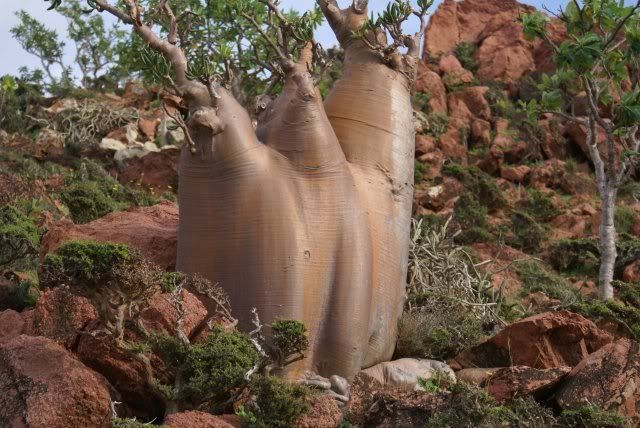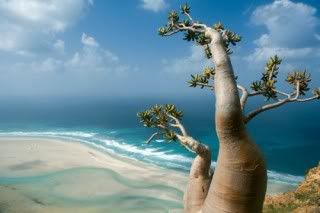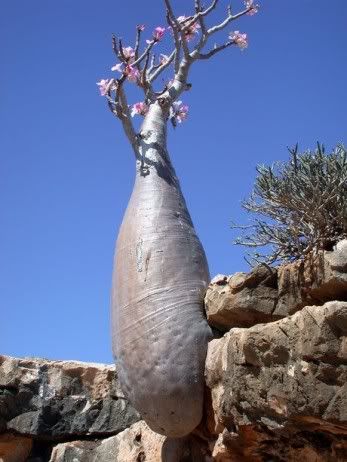 |
| All images courtesy of photobucket.com |
Yeah. That last thing is a tree.
The island of Socotra wouldn't be out of place in one of the alien worlds visited by Spaceman Spiff in the Calvin and Hobbes comic series. Believe it or not, though, these pictures were not taken by the Voyager 1 spacecraft. This place is right here on Earth.
The Socotra Archipelago is a land that time forgot. It contains four islands, the largest of which, at 1500 square miles, bears the same name and provides a home for some of the rarest and most unusual life-forms on the planet.
 |
| These trees were spawned in the eldritch depths of H. P. Lovecraft's mind. They don't even need soil. They just burrow into solid rock. |
 |
| still from photobucket.com |
For 250 million years, Socotra has been geographically isolated from mainland Africa. In all that time, plants and animals have had the place to themselves, 250 miles out from the nearest shore of Yemen. They've been free to evolve and take on wild forms in the privacy of a unique world of mountains (some above 4000 feet), coastal plains, caves, deserts and monsoon forests.
A biological survey of the main island in the 1990s found over 700 endemic species, that is, species that live nowhere else on Earth. Of particular note are frankincense trees (9 species of them), myrrh trees, and birds like the Socotra Bunting that are rare enough to make a holographic Charizard card look like a Weedle. Of course, just like every other precious, dwindling species in the world, the Socotra Bunting is being hunted to extinction by non-native, feral cats.
At least there will always be Dragon's Blood Trees:
 |
| Their resin has been used (not always effectively) for healing, alchemy, ritual magic, violin varnish, incense, and fake opium |
Don't worry though. This post is not a plea to protect a rapidly commercializing natural treasure. The Socotra Archipelago Conservation and Development Programme (SCDP) is an effort by the Yemenese government, backed by the United Nations and an international pool of funding, to protect the biodiversity of the islands. All these wonderful life-forms and awe-inspiring landscapes will hopefully be around for several million more years to come. If only we could do something about those damned feral cats.
Oh... and this thing:
 |
| This needs to go. |



I guessed Madagascar before the jump--the baobab trees there are pretty odd looking, too. Kudos for "the eldritch depths of HP Lovecraft's mind." That's far off the beaten path, but evokes vivid imagery for those that do know the reference. Pokemon, I had to look up...
ReplyDeleteI have heard that Yemen would be an ideal country for ecotourism, if not for the political instability and violence. It looks surreal!
ReplyDelete